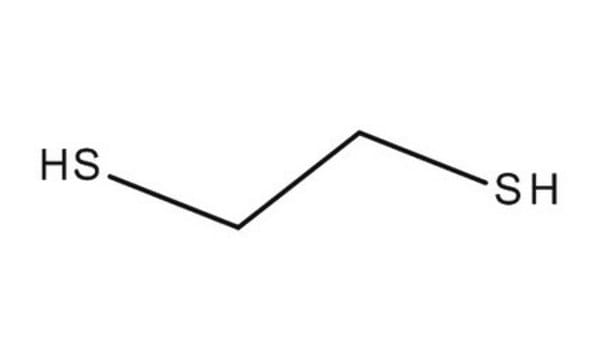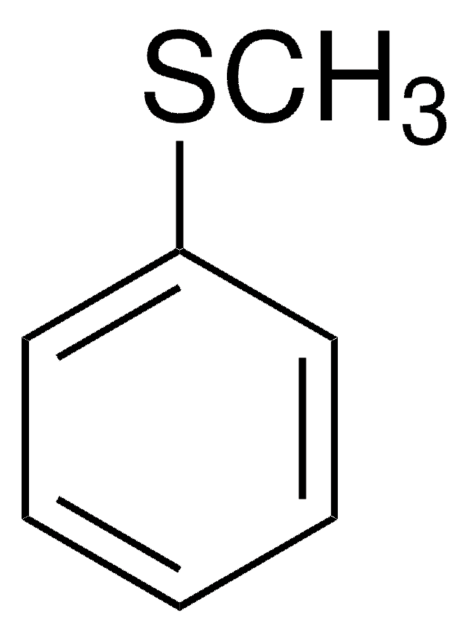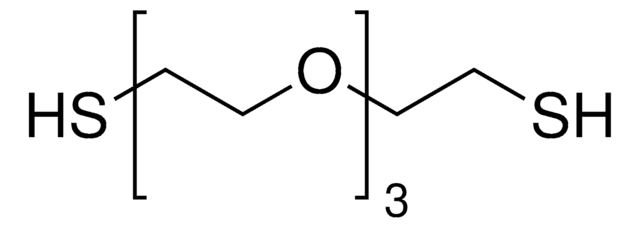02390
1,2-Ethanedithiol
≥98.0% (GC)
Synonyme(s) :
1,2-Dimercaptoethane, Dithioglycol, Ethylene mercaptan
About This Item
Produits recommandés
Densité de vapeur
>1 (vs air)
Niveau de qualité
Pression de vapeur
4.8 mmHg ( 20 °C)
Pureté
≥98.0% (GC)
Forme
liquid
Indice de réfraction
n20/D 1.558 (lit.)
n20/D 1.558
Point d'ébullition
144-146 °C (lit.)
Pf
−41 °C (lit.)
Densité
1.123 g/mL at 25 °C (lit.)
Chaîne SMILES
SCCS
InChI
1S/C2H6S2/c3-1-2-4/h3-4H,1-2H2
Clé InChI
VYMPLPIFKRHAAC-UHFFFAOYSA-N
Vous recherchez des produits similaires ? Visite Guide de comparaison des produits
Catégories apparentées
Description générale
Application
- 1,3-Dithiolanes by reacting with aldehydes or ketones.
- Dithiazepan-3-yl-alkanoic acids by cyclocondensation reaction with amino acids and formaldehyde.
- EDT can also be used as a scavenger in solid phase peptide synthesis for the efficient deprotection of the peptide resin.
Mention d'avertissement
Danger
Mentions de danger
Conseils de prudence
Classification des risques
Acute Tox. 2 Dermal - Acute Tox. 2 Inhalation - Acute Tox. 3 Oral - Flam. Liq. 3
Code de la classe de stockage
3 - Flammable liquids
Classe de danger pour l'eau (WGK)
WGK 3
Point d'éclair (°F)
111.2 °F - closed cup
Point d'éclair (°C)
44 °C - closed cup
Équipement de protection individuelle
Eyeshields, Faceshields, Gloves, type ABEK (EN14387) respirator filter
Choose from one of the most recent versions:
Déjà en possession de ce produit ?
Retrouvez la documentation relative aux produits que vous avez récemment achetés dans la Bibliothèque de documents.
Les clients ont également consulté
Notre équipe de scientifiques dispose d'une expérience dans tous les secteurs de la recherche, notamment en sciences de la vie, science des matériaux, synthèse chimique, chromatographie, analyse et dans de nombreux autres domaines..
Contacter notre Service technique












